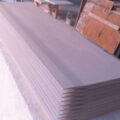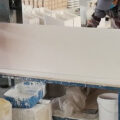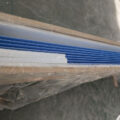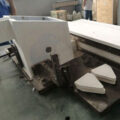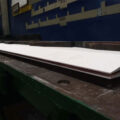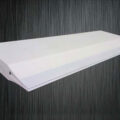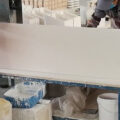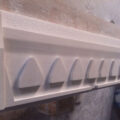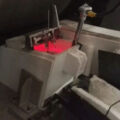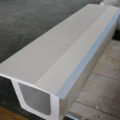During the aluminum strip casting process, molten aluminum is fed from the elongated feeder caster tip into the nip between two counter-rotating water-cooled rolls. The molten aluminum is cooled when it comes into contact with the rolls and is cooled when passing between the rolls, thereby forming a wide cast metal strip of uniform thickness. As long as the liquid metal is supplied to the casting machine, the casting process can proceed continuously.

The Feeder Caster Tip is usually made of a low-density ceramic material that can withstand the abrasion and thermal shock caused by contact with liquid aluminum, such as a ceramic fiber board in the necessary shape.
Due to the low density of these materials, their thermal conductivity is very low (usually less than 0.18 W/mK) and can provide a certain degree of thermal insulation for the liquid aluminum in the Caster Tip.
However, after a period of production, they may suffer chemical corrosion and wear. This will lead to the formation of various impurities in the tip structure and eventually lead to an early stop of the casting movement.
General principles for the setting of casting and rolling zone
- The thickness of the cast-rolled sheet is increased, and the cast-rolled area is reduced.
- The diameter of the casting roll increases, and the casting area increases.
- The thickness of the casting nozzle lip increases and the casting rolling area increases.
- The rolling force of the equipment is large, and the casting and rolling area is increased.
- The cast-rolling zone for pure aluminum and soft alloys is slightly longer, while the cast-rolling zone for hard alloys is slightly shorter.
Cast-rolling speed refers to the speed of the cast-rolled sheet. Compared with the linear speed of the casting roll, the casting-rolling speed has a certain amount of forward slip. The diameter is different, the front slip is different. The forward slip is usually about 6-10%.
The casting speed is determined by the liquid cavity. When the casting rolling speed increases to a certain critical value, the crystallization front moves to the exit plane of the casting roll. Due to the delay in cooling, the liquid cavity will deepen until the metal is too late to solidify and the liquid metal flows out of the roller. The seams flow out and affect normal rolling.
Therefore, there is a limit speed in the casting rolling speed, that is, the maximum speed for stable rolling in the critical liquid cavity.

